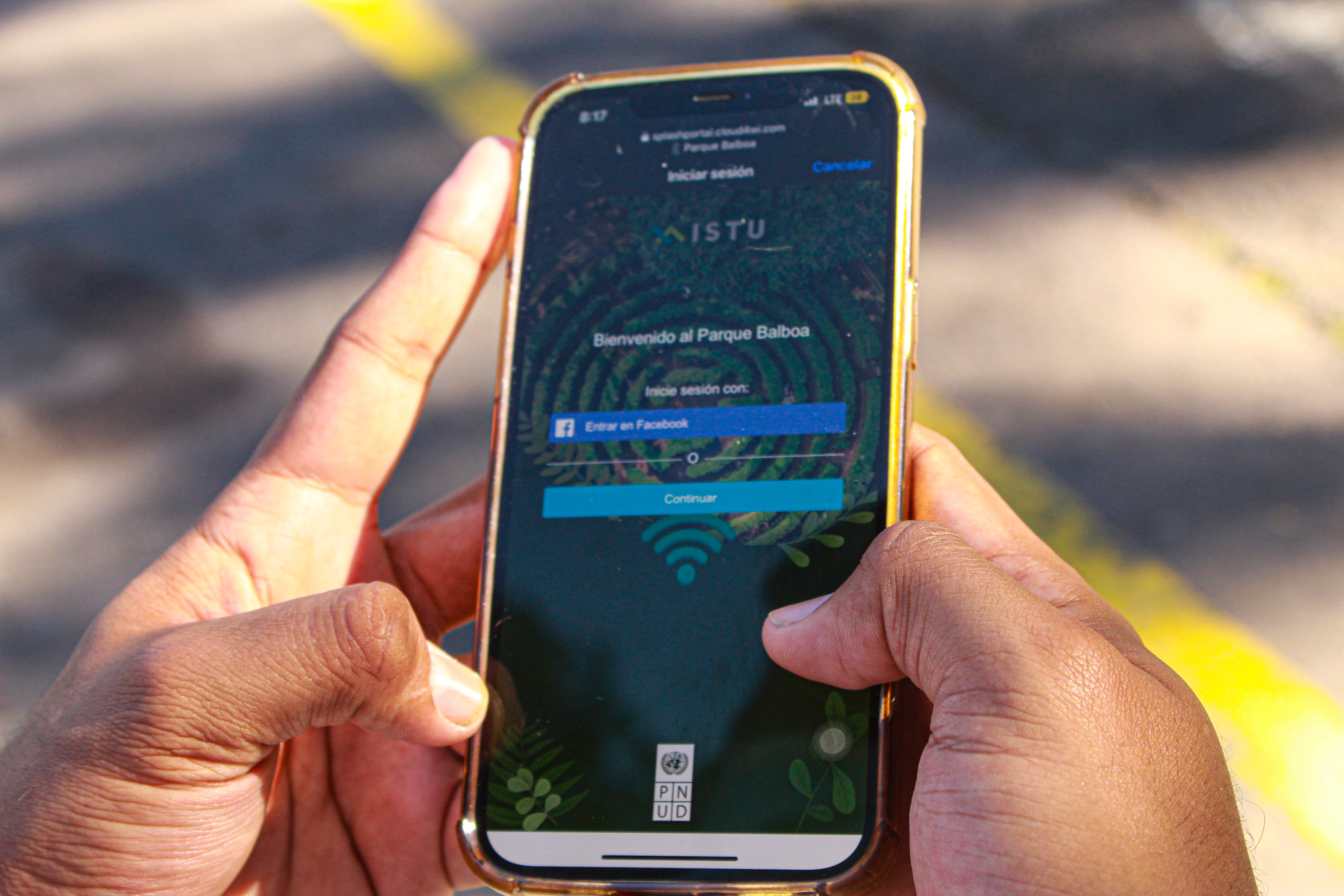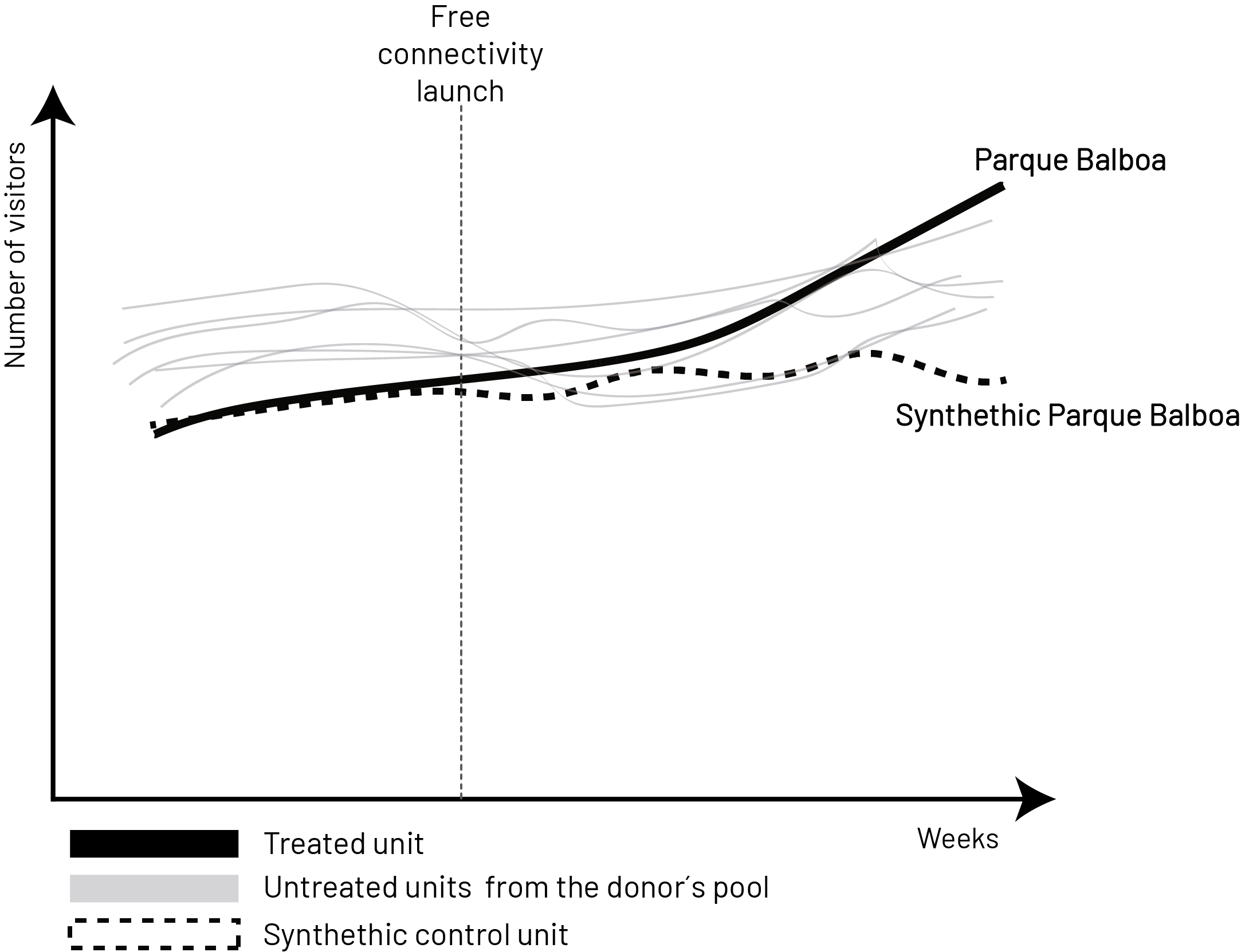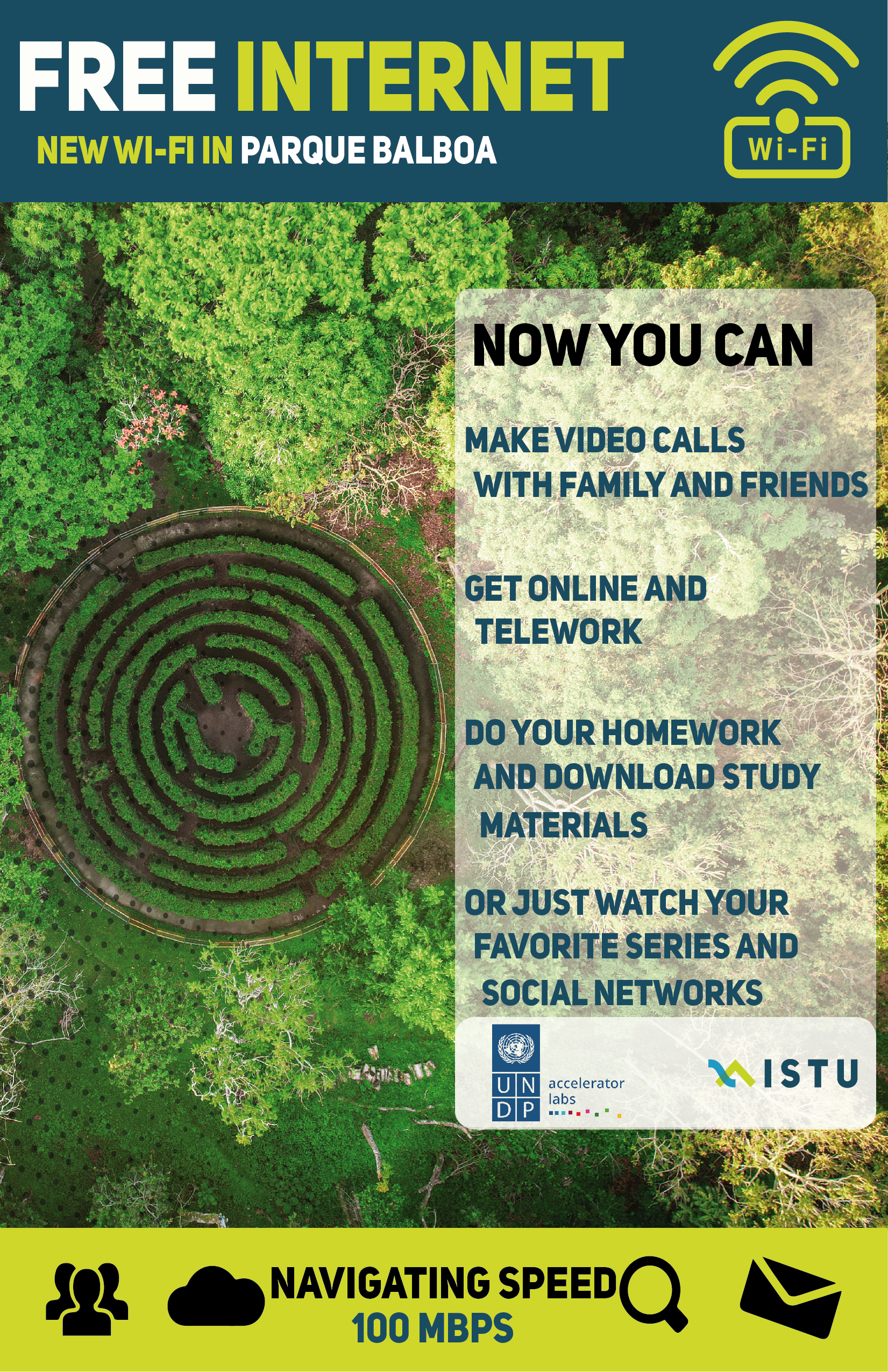Unlocking the potential of free connectivity in public spaces
September 28, 2023
Have you ever wondered how the Internet and broadband technologies can change the way we live and experience our public spaces?
The UNDP Accelerator Lab in El Salvador, in partnership with the Salvadoran Tourism Institute (ISTU), took on the task of setting up a pilot wi-fi and assessing the local benefits produced from deploying this network in tourist public spaces, such as Parque Balboa or hereafter Balboa Park. This Park is a natural area open to the public since 1949, which is situated 7 miles away from the Historic Center of San Salvador, the capital city.
This public space is well-known and a favorite among Salvadorans, attracting more than 40 thousand visitors per month due to its vast natural spaces, trails, playgrounds, access to sports and cultural activities, not to mention its traditional culinary offerings. It is also a hub for numerous micro and small businesses, mostly owned by women. These businesses operate in sectors related to food and beverages, handicraft, and various others.

Mobile device screen connecting to Balboa Park's public space
Drawing from a series of hypotheses about the potential advantages of free internet access in public spaces, we crafted a portfolio of experiments that addressed how free connectivity would attract more visitors to this location. At the same time, we also pondered how connectivity could be beneficial for the small businesses located there.
To answer the first question, we designed an experiment that would allow us to study the effect of the intervention on the number of weekly visitors coming to the park. To determine whether there would be a difference in outcomes between offering connectivity or not offering it, a comparison measurement was necessary. However, it is not always easy to find identical places to compare results!
When dealing with aggregated units like geographic areas, regions, or even countries, there may not be another unit that provides a reasonable approximation to the characteristics of the treated unit and serve as a valid control to estimate the treatment effect.
This is why we turned to a quasi-experimental method known as Synthetic Controls, devised to address this sort of challenges. The method involves comparing the treated unit –in this case, Balboa Park– before and after the intervention, with a clone or synthetic version of the treated unit: a Synthetic Balboa Park. This would be something like a twin of the park that does not have wi-fi!
This is achieved through a weighted combination of observations from the comparison group, so that the trends of both the covariates and outcome variable of the synthetic control match those of the treatment unit before the intervention. This clone allows us to estimate what would happen in the absence of the intervention, providing a result known as the counterfactual.

Expected evolution of compared units in the Synthetic Controls Method
During the study, the 10 untreated Salvadoran parks in the donor’s pool were also advertised on social media during the same time and using an identical budget to that assigned for promoting Balboa Natural Park.
If you agree with our hypothesis that free Internet would function as a magnet, pulling crowds to Balboa Park, let me share a reality that is a bit different. Despite this initial expectation, the results of this experiment did not yield statistically significant evidence of an increased number of visitors entering the public space, compared to the synthetic control condition. However, our journey through these findings still holds some revelations!
In fact, a very different story emerged with individuals who were already within this public space. Through interviews with visitors, it was revealed that wi-fi is an amenity that makes the public space even more attractive. After the internet launch, positive perceptions increased by 18.8 points from the study's baseline, and it was noted that 4 out of every 10 visitors that received a push notification on their devices chose to connect.
Furthermore, findings from another experiment we conducted simultaneously, through a clustered randomized trial within the park and involving 268 customers distributed among 8 local businesses, suggests that those customers who were informed about the free internet service through a promotional flyer extended their average stay by approximately 16 minutes. However, this alone did not translate into higher averages on their consumption bills.
Despite not seeing a major change in their spending, we discovered something else: those in the treatment clusters who were informed about the free internet were 8 times more likely to recommend the park to friends and family. That is a strong sign of how favorably consumers perceive the availability of free wi-fi in a public space!

Promotional flyer about free internet distributed to customers in treatment businesses within Balboa Park.
So, what does all of this mean? Well, free Internet did not act as a driver to attract more visitors to the park, but it did prove to be an added value with the potential to transform the experience of those who frequent it, while it also gives us a glimpse of its potential to improve opportunities for small businesses and their owners, although this will not happen automatically.
These findings also served us as a reminder that the journey toward tapping the full potential of public internet requires guidance and perseverance from all participants. Therefore, I am convinced that these initial findings emphasize the importance of persistent digital literacy programs for small business owners and the ongoing need to generate evidence to enrich tourism intelligence.
By doing so, the expansion and improvement of connectivity in public spaces can continue to be an increasingly beneficial tool for the development and enhancement of the citizen experience in the near future.

 Locations
Locations